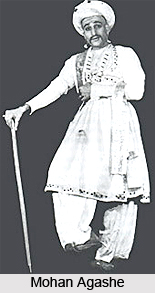 Mohan Agashe, born in 1947 is an actor in Marathi theatre. This theatre personality and actor`s birthplace is Bhor, in Pune district. He actively participated in theatre during his school days and won acclaim for his performances. Mohan Agashe is also a trained psychiatrist from Pune University. He started his career as an actor with his brilliantly urbane portrayal of the machinating Nana Phadnavis in Vijay Tendulkar`s Ghashiram Kotwal. He did this role for over twenty years for Theatre Academy, Pune, of which he was a founder member. He performed in their other productions too, and introduced the Grips children`s theatre project from Germany to Pune.
Mohan Agashe, born in 1947 is an actor in Marathi theatre. This theatre personality and actor`s birthplace is Bhor, in Pune district. He actively participated in theatre during his school days and won acclaim for his performances. Mohan Agashe is also a trained psychiatrist from Pune University. He started his career as an actor with his brilliantly urbane portrayal of the machinating Nana Phadnavis in Vijay Tendulkar`s Ghashiram Kotwal. He did this role for over twenty years for Theatre Academy, Pune, of which he was a founder member. He performed in their other productions too, and introduced the Grips children`s theatre project from Germany to Pune.
He has acted in art and commercial movies in Marathi, Hindi, and English, under directors like Satyajit Ray, Shyam Benegal, Gautam Ghosh, Mira Nair, and Jabbar Patel. His characterizations of the army man in Patel`s Samna i.e. Confrontation in 1975 and the Brahman in Ray`s Sadgati i.e. Deliverance in the year of 1981 demonstrate his versatility. He has also acted in television serials. He served as director of the Film and Television Institute of India, Pune, and was instrumental in establishing a psychiatric unit, the Maharashtra Manasik Arogya Sanstha, at the Sassoon Hospital, Pune. From April 1997 to April 2002 he was the Director General of the Film and Television Institute of India, Pune. But the tragedy is during his directorship the student association and some members of the faculty raised voice against his leadership. Due to some reasons under his leadership the institute saw one of the worst strikes ever.




















